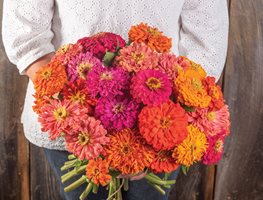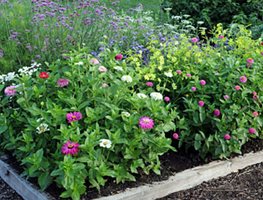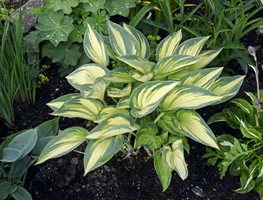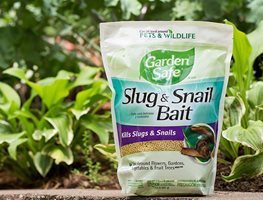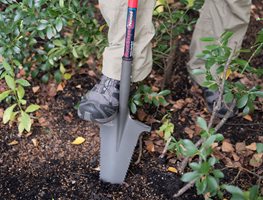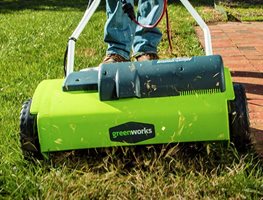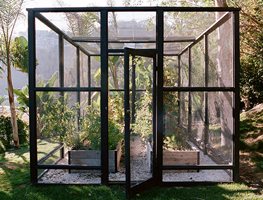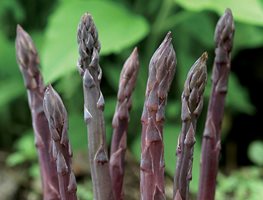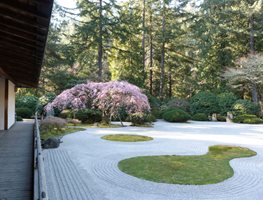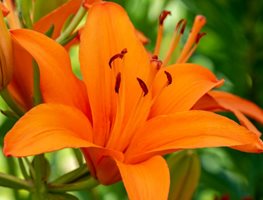10 Gardening Activities for March in the Pacific Northwest
Here are a few garden reminders, tips, inspiring ideas, and maintenance suggestions for your garden this month.
1. Sow Summer Crops
You may have started your summer crops at the end of last month, but March is prime time for starting warm-season vegetables. Cucumbers, eggplant, peppers, melons, tomatoes are all good to start this month. Summer flowers for the cutting garden such as nasturtium, celosia, sunflowers, and zinnias can also be planted in the ground or in garden beds. Consider planting new varieties this season by sampling new releases from seed suppliers such as Johnny's Selected Seeds, Burpee, Floret, or Botanical Interests.
2. Plan a Complete Cutting Garden
You don’t need much space for a prolific blooming cutting garden. You can grow 10 to 15 different flower varieties in just a 7- by 7-foot area. Check out these simple cutting garden plans from Gardener’s Supply that include 14 varieties of flowers organized into simple plant rows. As with any productive garden, you’ll need to start with good soil. Amend your soil with compost and fertilizer. Read up on how Floret Flower prepares their soil. Evenly distributed, consistent watering is also a key to success in cutting gardens. Be sure that your drip irrigation is evenly distributed throughout garden beds (not in one line down the middle of the planting bed).
3. Divide Summer- and Fall-Blooming Perennials
Perennials that have overgrown their location or those that have matured can be divided this month. Early spring is a good time to divide perennials because typically cool and moist weather provides optimal transplanting conditions for new plants. This timing also gives new plants a full growing season to recover before facing cold winter conditions. (When dividing is done in fall there’s a shorter window of time for plants to recover.) If you’re unsure about what to divide in early spring versus fall, use this guideline: If the perennial blooms before mid-June, then divide in fall. If the perennial blooms after mid-June, then divide in early spring. Perennials to divide now include lamb’s ears, stonecrop, yarrow, bee balm, daylilies, ornamental grasses, sage, coreopsis, cannas, rudbeckia, coneflower. Read more about dividing perennials or download this PDF that lists plant-specific dividing information, both from the University of Minnesota.
4. Prevent Slugs & Snails from Invading Your Garden
Slugs can be quite an issue in the garden come spring. Get a jumpstart on preventing slugs by applying an organic slug bait that’s safe for use around food, pets, and wildlife: Garden Safe Slug & Snail Bait, Sluggo Wildlife & Pet Safe Slug Killer. If you have raised beds for a kitchen garden or cutting garden, copper tape can also be an effective method for keeping snails and slugs out. Apply the tape along the edges or tops of the wood around your raised beds.
5. Stay on Top of Weeds
With moisture and a little sun, weeds in your garden will be sprouting in abundance. Keep up on weeds in garden beds before they grow out of control. Here are a few tools that help make weeding easier:
- Long-handled hoe for doing a majority of the weeding without bending over.
- Soil knife for weeds with thick roots as well as weeds around boulders or walls.
- Root Slayer Nomad spade and weeder for larger weeds or turning beds.
- Weed sweeper to remove weeds from joints in concrete or brick.
Don't miss what to do in the garden each month, make sure you're getting our weekly newsletter.
6. Restart Your Lawn Care
Your lawn probably won’t start growing a lot this month, but if it reaches 3 inches tall, it’s time to start mowing. There are also preventative actions to take this month, as well as actions to ensure general lawn health. To prevent crabgrass or broad-leaf weed seeds from germinating, apply an organic weed preventer. (Learn more about how to get rid of weeds.) Early spring is also a good time to aerate your lawn while the soil is still moist and relatively soft. Once you aerate, you can overseed. If necessary, you should also dethatch your lawn at this time using a manual dethatching rake or mechanical dethatcher. You likely won’t need to fertilize until May.
7. Plan Your Berry Patch
You likely won’t start planting new blueberries, blackberries, raspberries, or gooseberries until April or even May in colder climates, but that doesn’t mean you can’t plan ahead now. One common issue with growing berries is that birds often get them before they can be harvested. Consider adding a protective structure and net around your berries. Crop cages will help protect your berries so you can enjoy more of them. You can even build larger custom cages for berries and other produce if you’re looking for an early spring project. On their website, Edible Gardens LA has some beautiful designs for custom crop cages.
8. Plant Asparagus
Growing asparagus at home will result in delicious spears to eat fresh from your garden in about a year. When planting crowns (instead of growing from seed) you should have asparagus to eat the following year. When planting from seed, it can take 2 to 3 years before you have a harvest. Plant crowns in early spring as soon as the soil can be worked. Try varieties from Johnny's Selected Seeds or Stark Bro's. If you’d like to learn more about growing asparagus check out this article from Seattle Urban Farm Company about growing and harvesting asparagus.
9. Visit a Garden or Conservancy
The Pacific Northwest is home to a number of gorgeous botanical gardens and conservancies. Spring is a great time to get ideas for your own garden and the quickly approaching planting season. Be sure to keep an eye on visiting the Portland Japanese Garden because the cherry blossoms typically start to bloom in late March (depending on the weather, they may start in early April). While you’re in the area, make a stop at Leach Botanical Garden, also in Portland. From March through spring and summer, plan trips to other gardens in and around the area such as these gardens in the Seattle region: Bellevue Botanical Garden, Bloedel Reserve, Dunn Gardens, Heronswood, PowellsWood, Seattle Japanese Garden, Volunteer Park Conservancy, and W.W. Seymour Conservancy. A beautiful garden to visit in Victoria, Canada is Butchart Gardens.
Also see our Self-Guided Day Trips for Portland and Seattle.
10. Start Planting Spring-Planted Bulbs
Toward the end of the month, you can start planting spring-planted bulbs such as gladiolus, begonias, ranunculus, calla lilies, and others. For other bulbs, tubers, and rhizomes that like warmer weather (dahlias, lilies, elephant ear) be sure to wait until the soil temperatures have risen to around 60 degrees F. When planting, select a location with full sun and well-draining soil. Bulbs, tubers, or rhizomes will rot if sitting in soggy soil. Mix in compost and bulb fertilizer with garden soil so bulbs have nutrients for the growing season. As a general rule, plant bulbs at a depth of 2 to 3 times the bulb height. For dahlia tubers dig a hole 4 to 6 inches deep. If you haven’t bought any bulbs yet, check out a local garden center or online at retailers such as Longfield Gardens.
If you enjoyed this information, sign up for our weekly newsletter. Each week, you'll get Garden Design's best delivered right to your inbox including design tips, plant picks, great gardens, outdoor living products, and events to enjoy — along with monthly gardening checklists just for your area.
Do you know someone who would enjoy this Pacific Northwest Region gardening information? Why not share it with them?
When you purchase products through links on our site, we may receive an affiliate commission. Thank you for your support.
